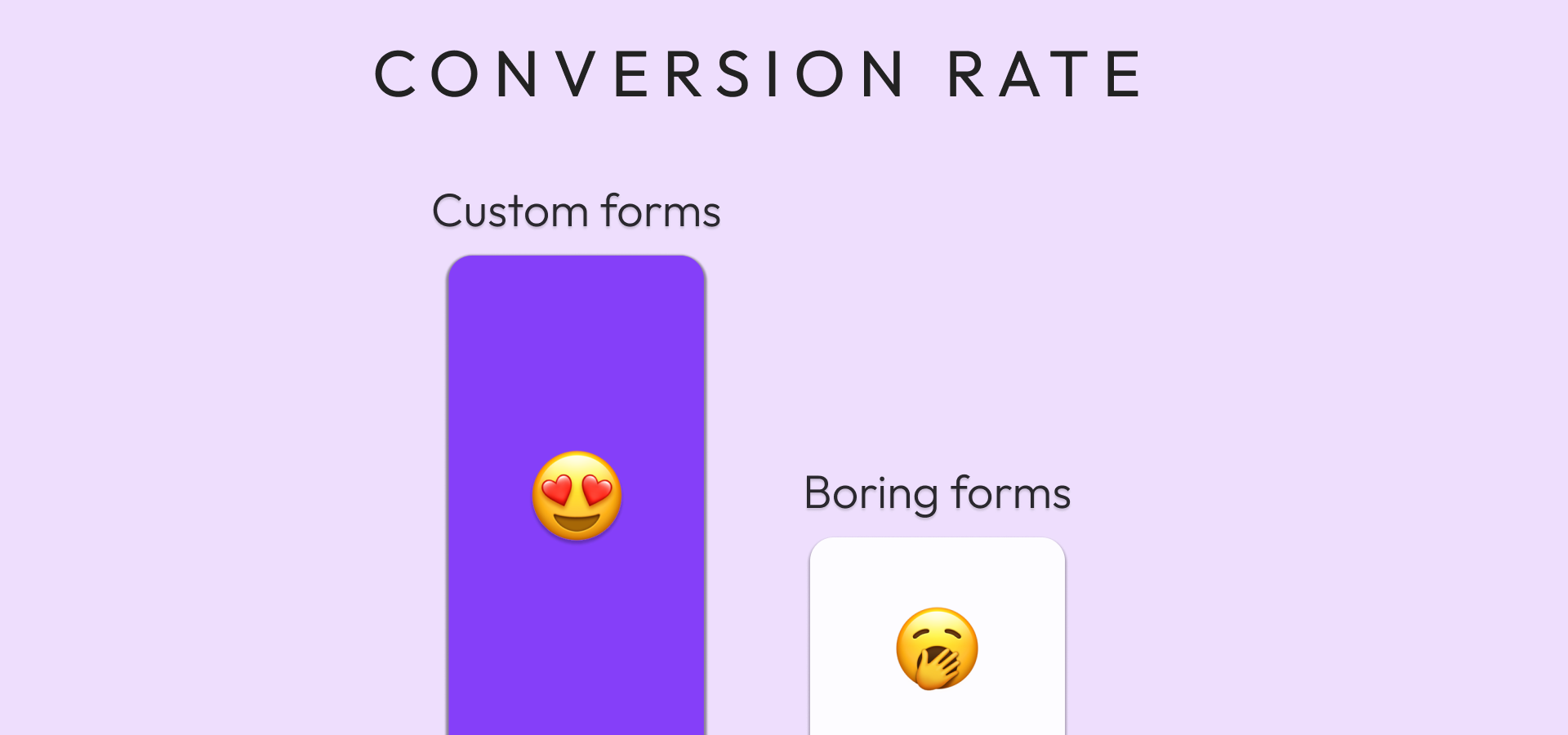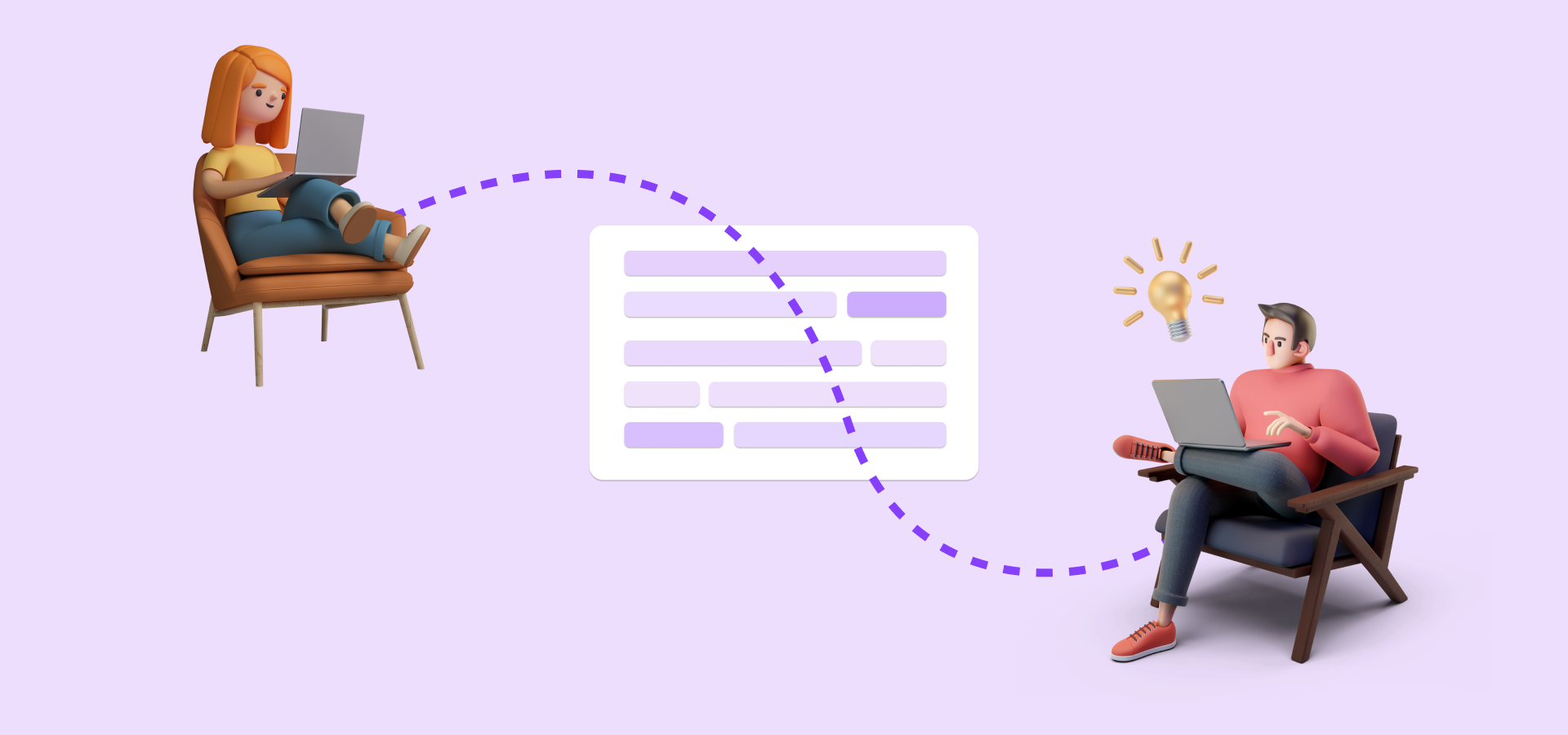With a user base stretching far beyond designers, Figma has set its position as the number one design software in the world. From developers and product managers to marketing teams, content creators, entrepreneurs and more, Figma can be of use to professionals with totally different design skills and project goals.
Many people use Figma to create basically any type of designs and visuals but often miss out on designing forms. It is perhaps due to inability to turn a design into a working form. Yet, this is no longer the case thanks to the Weavely plugin ;)
So, if you're still using Google Forms or expensive form builders to create (custom) forms, here are 6 reasons why you should consider designing forms in Figma.
#1 Higher Form Conversion Rate

It's not a secret that between plain text and a colourful visual our brain chooses to first look at the latter. The same logic applies to forms. Custom forms lead respondents through the questions in an engaging way. Not only does this result into a higher response rate but also in a higher completion rate. And we're not making it up!
An academic study on aesthetics and survey quality by researchers at Washington State university proves that design aesthetics largely affects data quality. A leading data company Kantar came to similar conclusions in their research on how visual surveys influence respondent engagement. According to their findings, well-visualised information can be 10 times more impactful than unvisualised, encouraging people to share feedback.
In general, custom layouts, question types, and interactive elements increase form conversion rate. Moreover, tailored user journeys lead to respondents fully completing forms and enable you to collect more specific and relevant data. Kantar also highlights the importance of visuals in surveys. Choosing the right visuals helps your respondents interpret survey questions adequately, contributing to more accurate results.
#2 Company Branding for Better Quality Feedback

Surveys and forms represent your brand just as much as other marketing materials. Therefore, it is important to style a form to fit your brand image. Company branding increases reliability, while generic-looking forms might appear less trustworthy. The latter affects both form conversion rates and the quality of responses. When customers know the form is published on behalf of your company, they are more likely to provide relevant and honest feedback. In addition, putting company branding in your forms and surveys is simply a great way to spread brand awareness.
Whereas many form builders do allow to add branding, this option is sometimes hidden behind the paywall or is limited to adding a company logo or adjusting colour palette. Designing forms in Figma gives you total freedom as to from styling and what brand elements to include.
#3 Collaborate on Forms Using Figma’s Built-in Features

The traditional form builder model often involves creating forms in isolation and sharing static design files for review, feedback, and updates. This not only slows down the design iteration process but also creates potential communication gaps and version control challenges.
Real-time collaboration is yet another big advantage of creating forms in Figma. Brainstorming is extremely easy with Figma’s seamless collaboration feature. Share your design file with your team mates, design together, ask for feedback and leave comments, without any limitations on collaboration.
#4 Figma Community Resources to Create More Custom Forms

Resources you can find in Figma community increase your form customisation possibilities even further. You can find inspiration from other Figma users, as well as plenty of useful materials to help you design even more custom forms. Thousands of templates, widgets, icons, UI kits, illustrations and animations are available in Figma community resources absolutely for free. And if you're an experienced Figma user, you know how life-saving that can be! 🚑
#5 Ability to Publish Working Forms and Collect Responses

Finally, another reason to design forms and surveys in Figma is the ability to publish your forms and collect responses. Yes, that's right, forms designed in Figma can now turn from static images into working forms thanks to the Weavely plugin. In addition, Weavely provides you with various fully functioning form elements that you can style yourself. It takes only a few clicks to publish a form. If you have a design prepared, simply copy-paste it into a Weavely form and add form elements. Or you can generate a form from scratch using weavely’s AI. Just leave a prompt and Weavely will generate you a survey with relevant form elements and content. Imagine Google Forms but in Figma and with an AI integration!
#6 Unlimited A/B Testing

A/B testing forms is a critical aspect of optimising user experience, engagement, and form conversion rate. It can provide you quantitative insights into the effectiveness of different elements within your form.
Using Figma and the Weavely plugin facilitates A/B testing, as you can test every aspect of your form in detail, iterate and launch forms without any volume limitations. While Figma lets you easily duplicate elements or entire frames and tweak them in a matter of seconds, Weavely allows you to publish as many forms as you want.
Stop relying on assumptions or gut feelings about what might work and experience the most detailed form testing ever!




